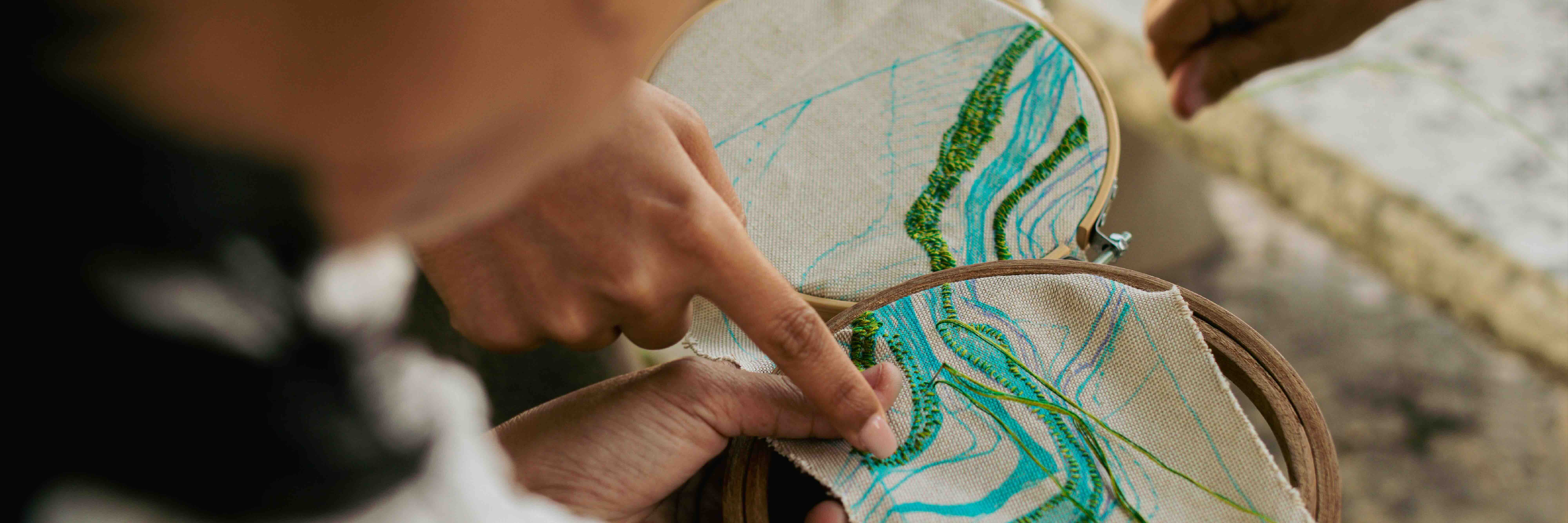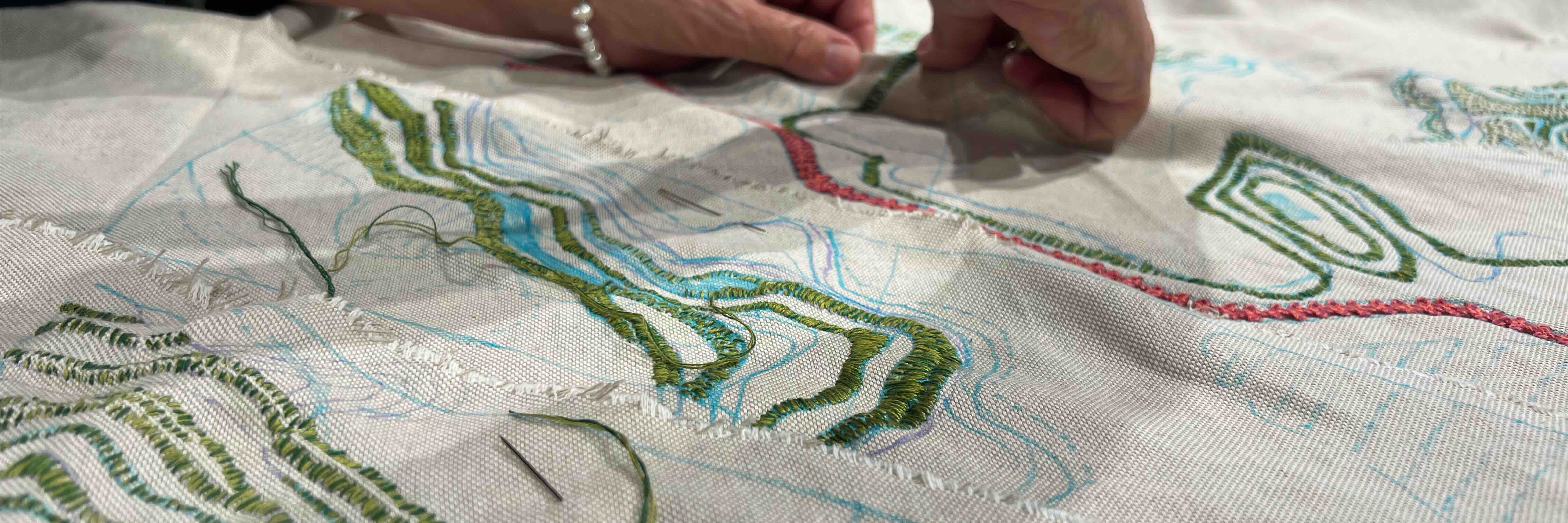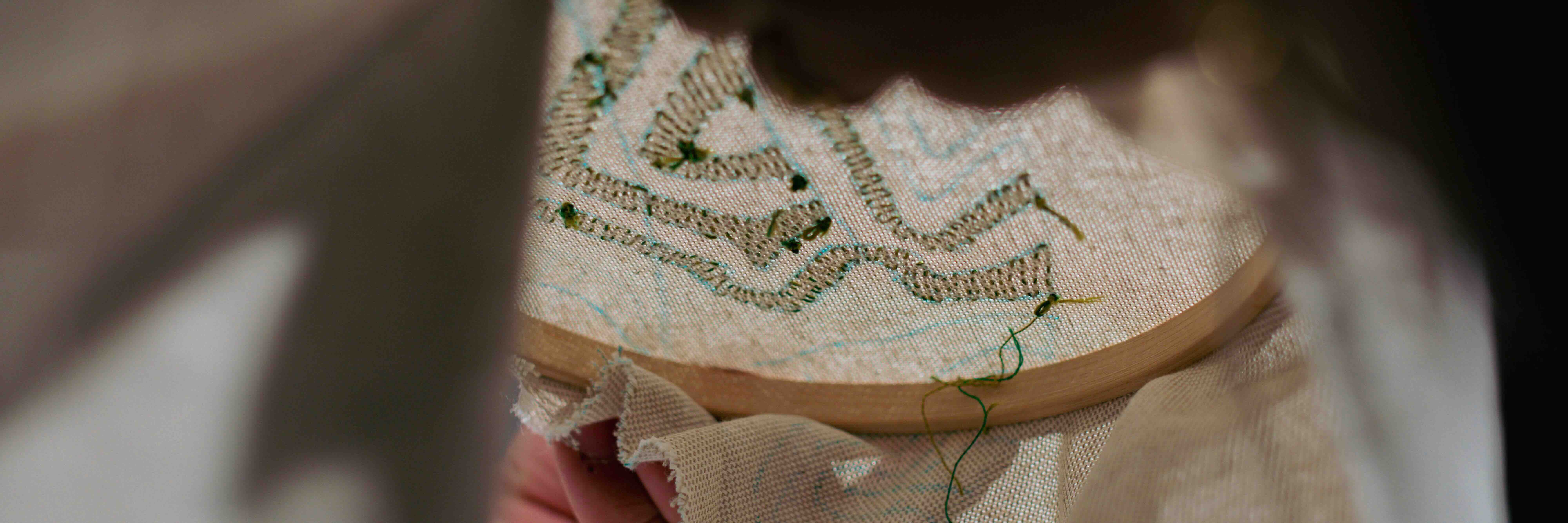This project began with an invitation from the medieval town of Ourém, a place historically regarded as the symbolic border between the Muslim South and Christian North of Portugal. This notion of an "imaginary" boundary sparked a central question: how are all borders, whether cultural or political, created and why do we accept their authority?
In response, artist Riddhi invited four immigrant women to collaboratively reimagine the borders of Ourém. Their only guide was the land's authentic topography—the hills, and valleys. This method directly mirrors how colonizers once drew maps across unfamiliar territories, imposing divisions without knowledge of the local people, culture, or ecology. Here, the act is reclaimed by those who are not from Ourém, for the purpose of questioning the very logic of arbitrary division.

The resulting embroidered maps are a deliberate critique of power. We ask: who controls the narrative of a place, and who is controlled by it? By playfully adopting the colonizer’s method, the work exposes the profound absurdity of allowing lines on a map to dictate human lives and identities.

Finally, the choice of medium and aesthetic is crucial. The embroidery employs organic, nature-like stitches to create a lush, tactile landscape. This visual language serves as a powerful reminder that ecological reality is the only true, enduring governor of how humans and animals have always inhabited land.




.png)


